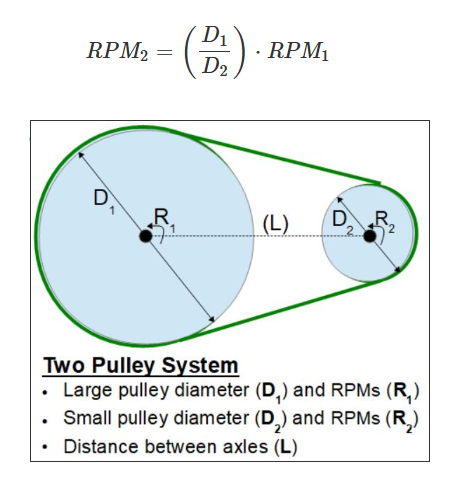 Home
Home
 Back
Back

The RPM of the second pulley can be calculated based on the RPM of the first pulley and the diameters of both pulleys. The formula is as follows:
2nd Pulley RPM = \( \left(\frac{D_1}{D_2}\right) \cdot RPM_1 \)
- \( RPM_1 \): Rotation rate of the first pulley (in revolutions per minute).
- \( D_1 \): Diameter of the first pulley (in meters).
- \( D_2 \): Diameter of the second pulley (in meters).
- \( RPM_2 \): Rotation rate of the second pulley (to be calculated).
If the diameter of the first pulley (\( D_1 \)) is 4 inches, the diameter of the second pulley (\( D_2 \)) is 2 inches, and the RPM of the first pulley (\( RPM_1 \)) is 100 RPM, the RPM of the second pulley would be:
2nd Pulley RPM = \( \left(\frac{4}{2}\right) \cdot 100 = 200 \, \text{RPM} \)
This calculator determines the RPM of a second pulley based on the RPM of the first pulley and the diameters of both pulleys, useful in mechanical and engineering applications.
Yes, the calculator supports various units for rotation rate, including RPM, radians/second, degrees/second, and more. All inputs are converted to RPM for accurate calculations.
The calculator accepts diameter inputs in meters, centimeters, inches, feet, and yards, and automatically converts them to meters for the calculation.
Entering zero for any diameter value will result in no calculation, as division by zero is undefined. Please ensure all diameter values are greater than zero.
The results are displayed in multiple rotation rate units (RPM, rad/s, rad/min, rev/s) for convenience, allowing you to use the value in your preferred unit.